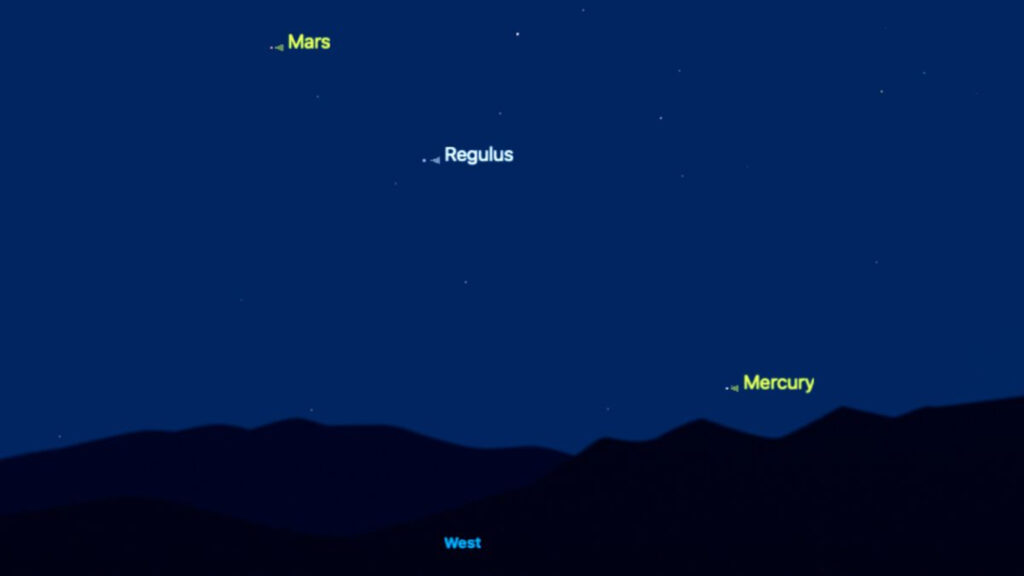
Mercury will reach its point of greatest eastern elongation on Friday, July 4, providing an exceptional opportunity for stargazers to observe the elusive planet in the evening sky. This celestial event marks the moment when Mercury appears farthest from the Sun in the Earth’s sky, making it more visible just after sunset.
Astronomers classify Mercury as an “inferior planet” due to its orbit being closer to the Sun than Earth’s. Consequently, Mercury never strays far from the Sun in our sky and typically appears low on the horizon. This contrasts with planets like Jupiter and Mars, whose more distant orbits allow them to ascend higher along the ecliptic plane, the path traced by major planets around the Sun.
Understanding Mercury’s Elongation
The point of greatest elongation for Mercury will occur at 00:37 a.m. EDT (0437 GMT) on July 4, according to the stargazing website in-the-sky.org. For observers in the United States, this event presents a golden opportunity to spot Mercury shining low above the western horizon immediately after sunset. On July 4, viewers in New York can expect to see the rocky planet as a bright “evening star” approximately 15 degrees above the western horizon in the constellation Cancer.
For perspective, 10 degrees in the sky is roughly equivalent to the span of a clenched fist held at arm’s length. However, Mercury’s low altitude may pose a challenge for those in urban areas, so it is advisable to find a location with a clear horizon to catch a glimpse of the planet before it sets less than an hour and a half after sundown.
Celestial Companions and Viewing Tips
On the evening of July 4, Mercury will share the night sky with Regulus and Mars. As the evening progresses, the “Great Bear” of the constellation Ursa Major will become visible, followed by the stars of Leo and the red glow of Mars, which will descend toward the western horizon.
For those eager to explore these celestial wonders, the Celestron NexStar 4SE telescope is recommended for beginners seeking quality and reliable views of the night sky. Additionally, stargazers can benefit from a variety of smartphone astronomy apps, many of which utilize augmented reality technology to aid navigation of the cosmos.
Historical Context and Observational Challenges
Mercury’s position in the sky has long fascinated astronomers and skywatchers alike. Historically, its proximity to the Sun has made it a challenging target for observation, often requiring precise timing and clear skies. The planet’s rapid orbit around the Sun, completing a revolution in just 88 Earth days, contributes to its fleeting visibility.
“Mercury’s greatest elongation is always a highlight for astronomers, offering a rare chance to observe the innermost planet in our solar system,” said Dr. Jane Smith, an astronomer at the Planetary Science Institute.
Despite these challenges, advancements in technology and observational techniques have made it easier for amateur astronomers to enjoy these celestial events. The use of telescopes and digital tools has democratized access to the night sky, allowing more people to witness the beauty of our solar system.
Looking Ahead
As Mercury reaches its greatest elongation, stargazers are reminded of the dynamic and ever-changing nature of our solar system. This event not only provides a visual spectacle but also serves as a reminder of the intricate dance of celestial bodies that has captivated humanity for centuries.
For those interested in capturing the moment, Space.com invites readers to share their photos of Mercury, along with comments, name, and location, by emailing [email protected]. As we continue to explore the cosmos, events like Mercury’s greatest elongation inspire curiosity and wonder, encouraging us to look up and appreciate the vastness of the universe.







